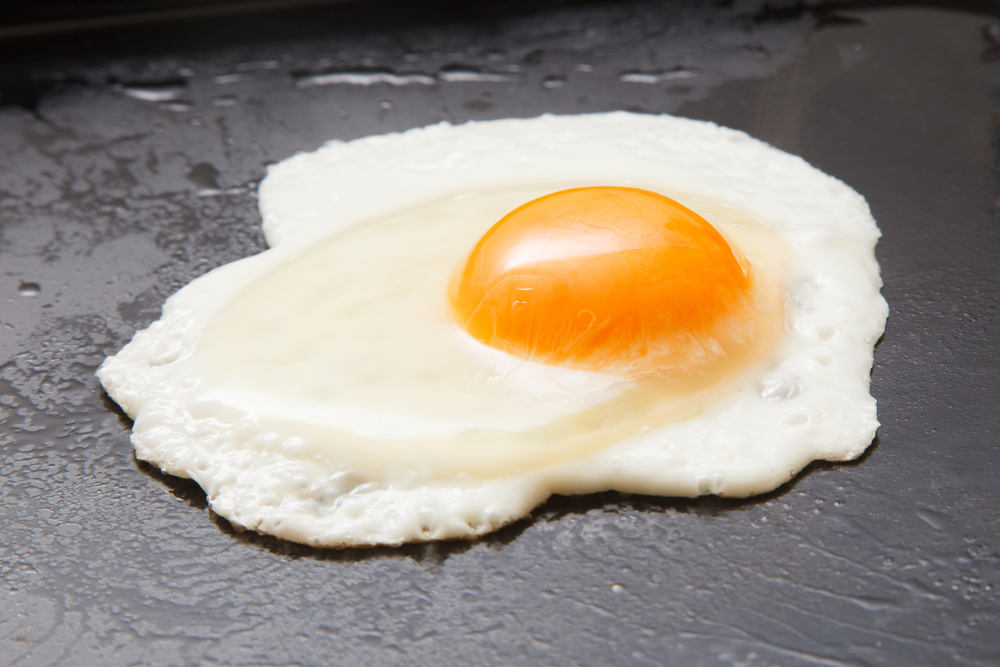Eggs, Change, and Osmosis
- March 24, 2015
- By Marjorie Frank

“The incredible edible egg.” Almost everyone has seen or heard this marketing slogan connected to the American Egg Board. It comes with a jingle, contests, and YouTube videos. Incredibleegg.org, home to the American Egg Board, is the locus on lots of information about eggs, including nutrition facts, recipes, and the odd eye-popper, such as the fact that about 75 billion (yes, with a b) eggs are laid in the United States each year. What you won’t find at the site are some of the really cool science concepts eggs can illustrate. You’ll find a couple of them here.
But first, some background. For our purposes, the key parts of an egg consist of the shell, an inner and outer membrane, the egg white, and the yolk. The shell is mostly made up of calcium carbonate. Beneath it are two transparent membranes. They are held together tightly to keep bacteria from getting through. If you’ve gotten lucky peeling a hard-boiled egg, the membrane is the part of the egg that sticks to the shell enabling you to remove it easily. Under the membrane is a clear, liquid-y fluid. This is the part that turns white as an egg cooks. Known “officially” as albumen, the egg white is made up of water and about 40 different proteins. Finally, is the yolk, a powerhouse of protein, vitamins, and minerals and the biggest part of the single cell that makes up the egg’s interior. The yolk is probably the most easily observable single cell on the planet.
Now for the cool stuff.
Physical and Chemical Changes
Bring in a hard-boiled egg and peel it or invite students to help you peel it. In either case, they’ll be able observe the membrane first hand, which will help them appreciate what’s coming next.
Discuss with students that peeling off the eggshell is a physical change, in the same way that ripping paper, molding clay, and chopping wood are physical changes. Point out that the shell can also be removed by means of a chemical change.
Most science textbooks use cooking, rusting, and burning to illustrate chemical changes. Of course, these are great examples, but they may be difficult to demonstrate in a classroom. An egg can help kids see a chemical change take place right before their eyes. Here’s how:
Put an egg (raw or cooked) in a container and cover it with vinegar. Invite students to observe that bubbles are forming on the shell. The bubbles are the result of a chemical reaction between the vinegar and the eggshell. Vinegar contains acetic acid, which breaks down the calcium carbonate of the eggshell into calcium and carbonate. The carbonate combines with oxygen in the vinegar to form carbon dioxide, a gas. The bubbles on the eggshell are the carbon dioxide
Leave the egg in the vinegar for four or five days. Encourage students to observe periodically and make predictions about what will happen. After several days, scoop the egg out of the container. Allow students to hold it lightly and describe what they experience.
The only thing keeping the egg together now is the membrane; the shell is totally gone. When you hear the phrase, “naked egg,” this is what it means.
Allow volunteers to gently drop the naked egg onto a countertop or desk from the height of a couple inches. They’ll see that it actually has some bounce to it.
If you started with a raw egg, your naked egg will now be translucent as well as bouncy. Invite students to shine a flashlight through the egg and observe its translucency.
Pretty cool….but that’s not all. You can use your naked egg to demonstrate osmosis.
Osmosis
As you know, osmosis is the process of molecules moving from an area of higher concentration to an area of lower concentration. For example, osmosis is what happens when someone forgets to water a plant. Water molecules in the plant’s cells continuously move to the surrounding atmosphere. When they are not replaced with other water molecules (such as when a planted is not watered), the plant cells shrivel, and the plant, as a whole, wilts.
A naked egg can make osmosis within a single cell highly observable. Here’s how:
Place the naked egg in a container with enough corn syrup to cover it. Let the egg stand for 24 hours, and observe it periodically. After a day, the egg shrinks, and the membrane becomes loose. Why? Osmosis. The corn syrup is 25% water; the egg white is 90% water. Water molecules moved from the egg white, an area of higher concentration, to the corn syrup, an area of lower concentration causing the egg white to shrink.
Invite kids to suggest a way to make the egg plump again, and hope someone proposes placing the egg in a container of water, which is exactly how to do it. What would happen if the water had food coloring in it? Salt? Sugar? Experiment to find out.
These are just two of many ways eggs can help illustrate important science concepts. You can find more at exploratorium.edu using “egg activities” as a key word search. I’m confident you’ll come away feeling that these small bundles of nutrition aren’t just for breakfast anymore.


